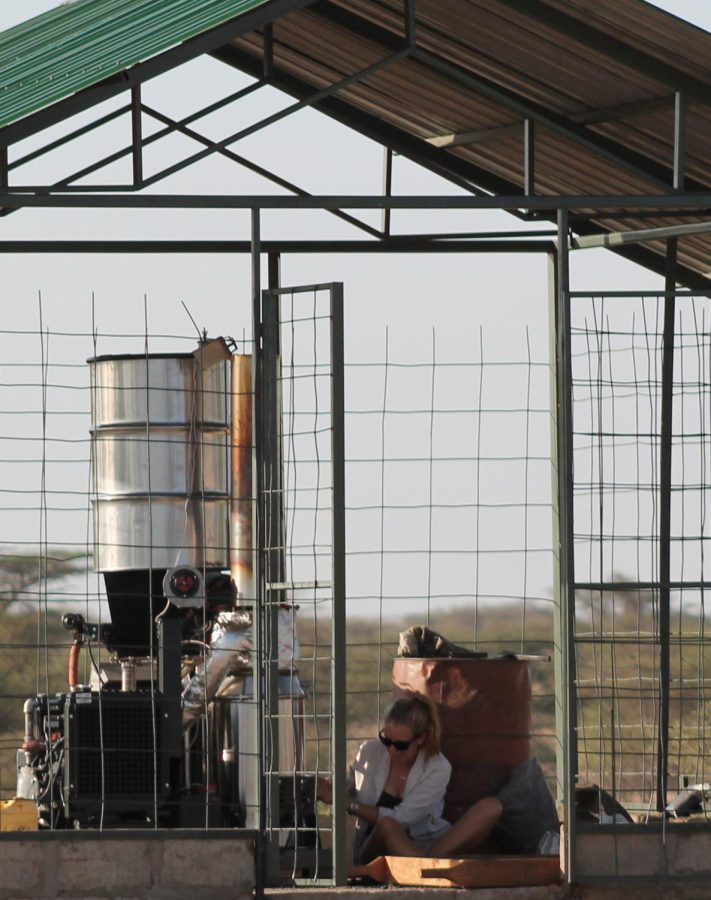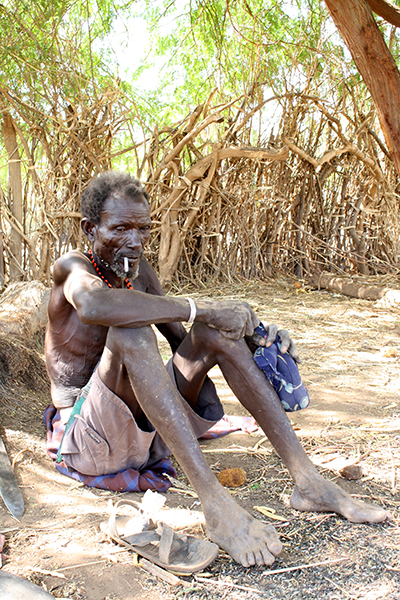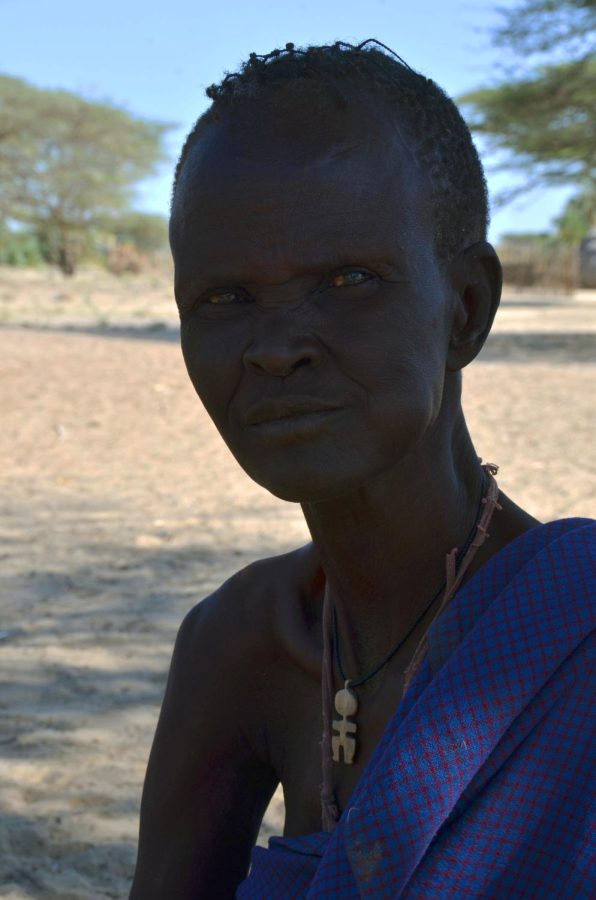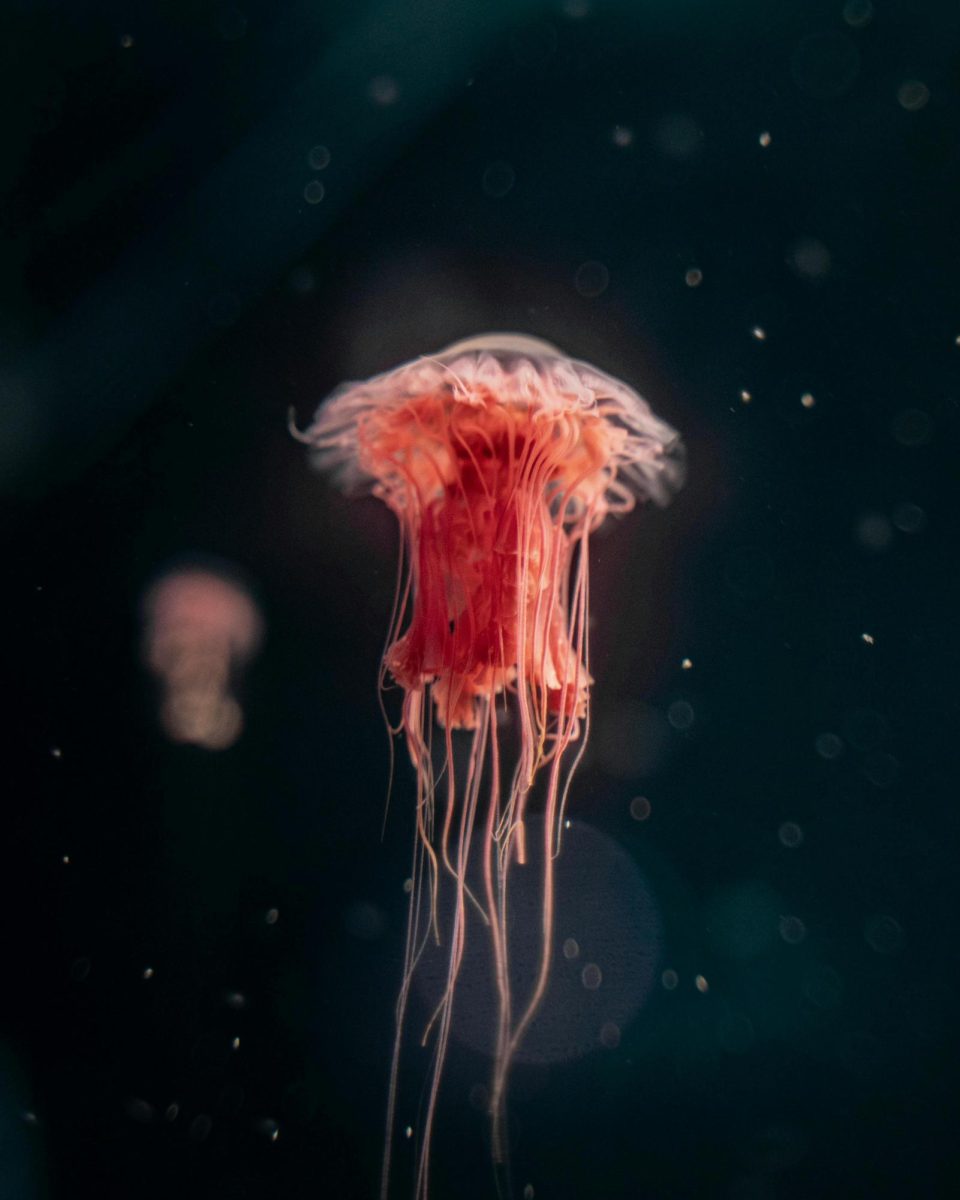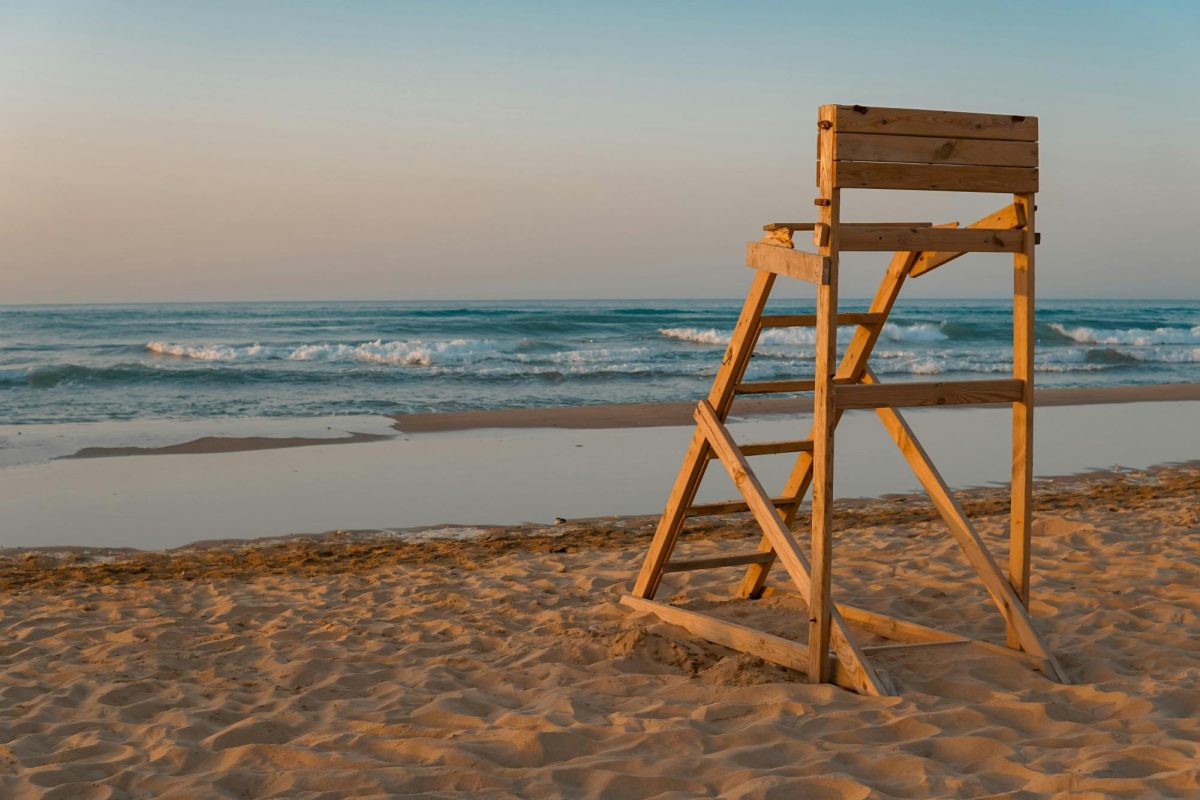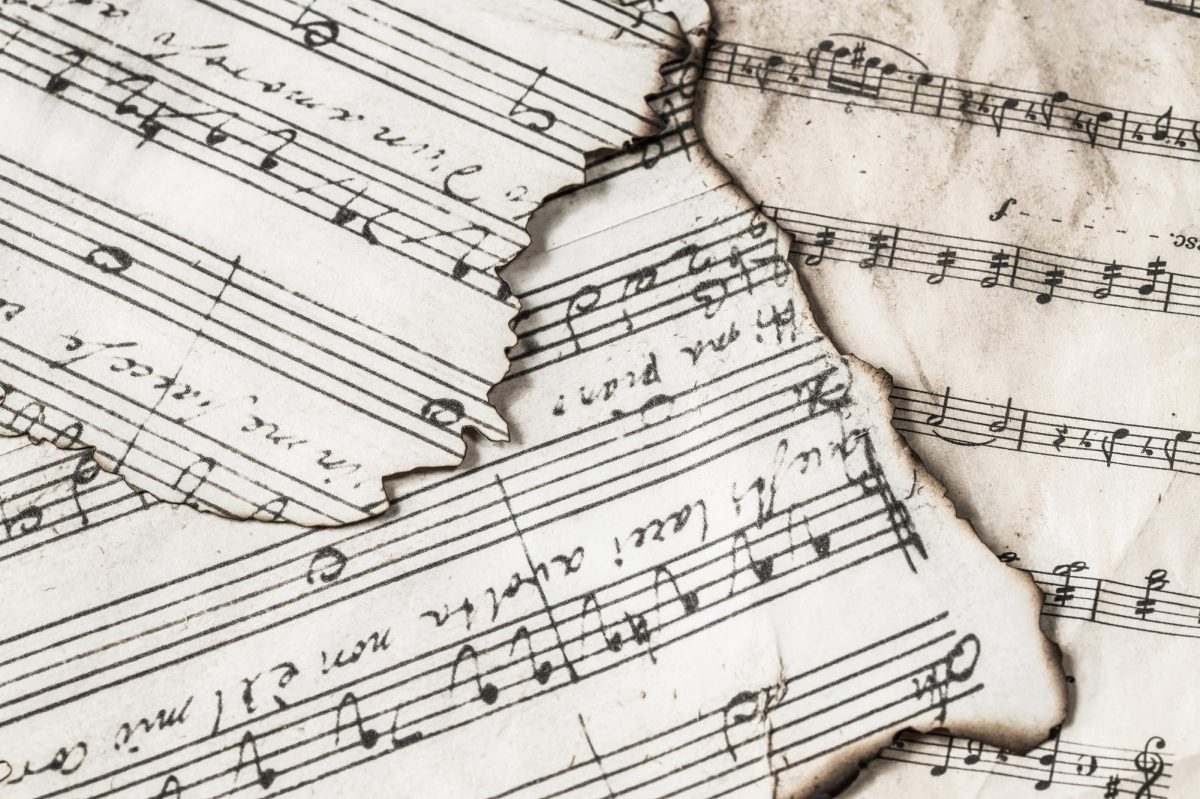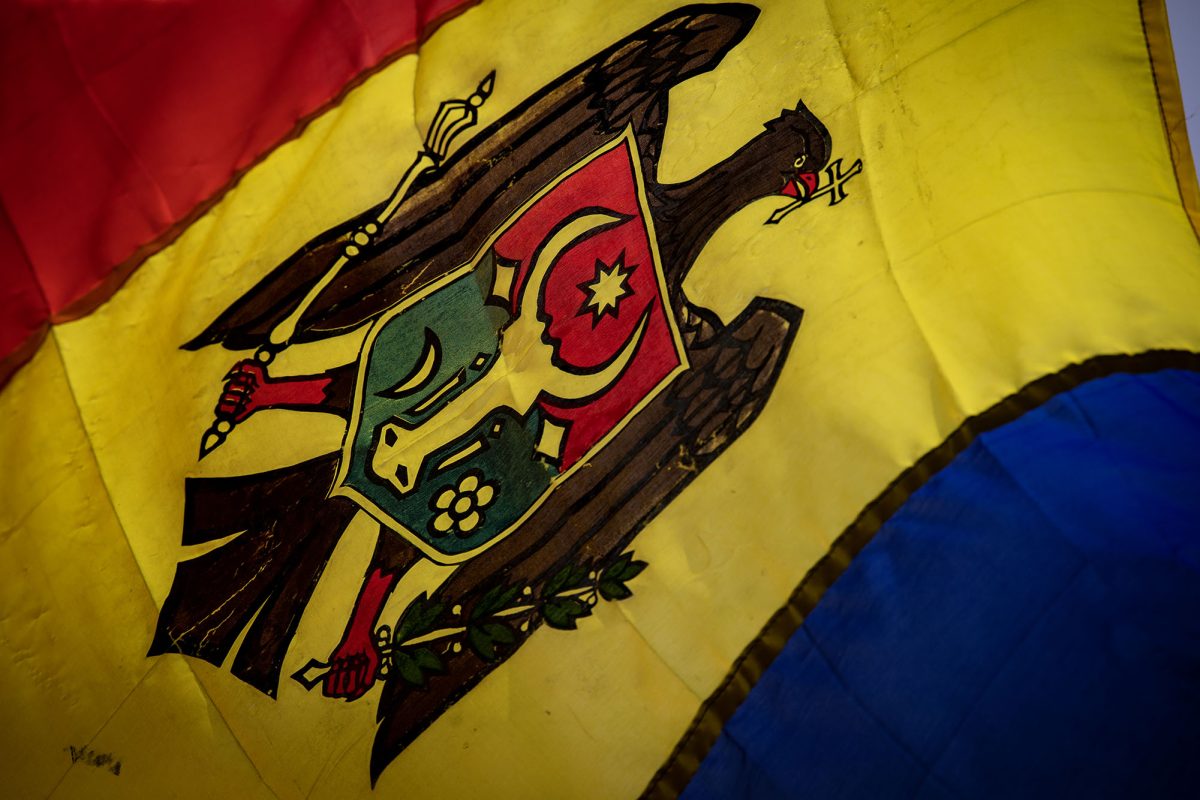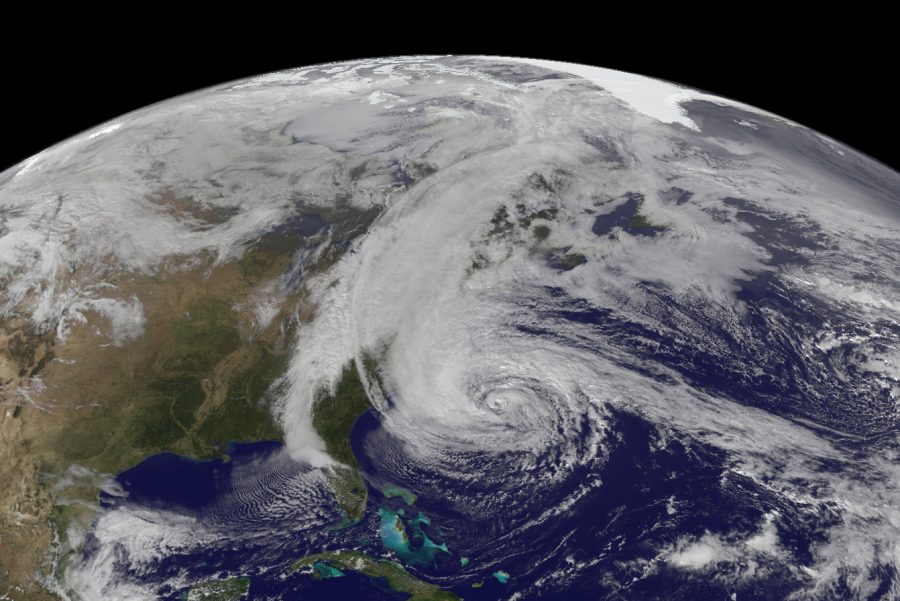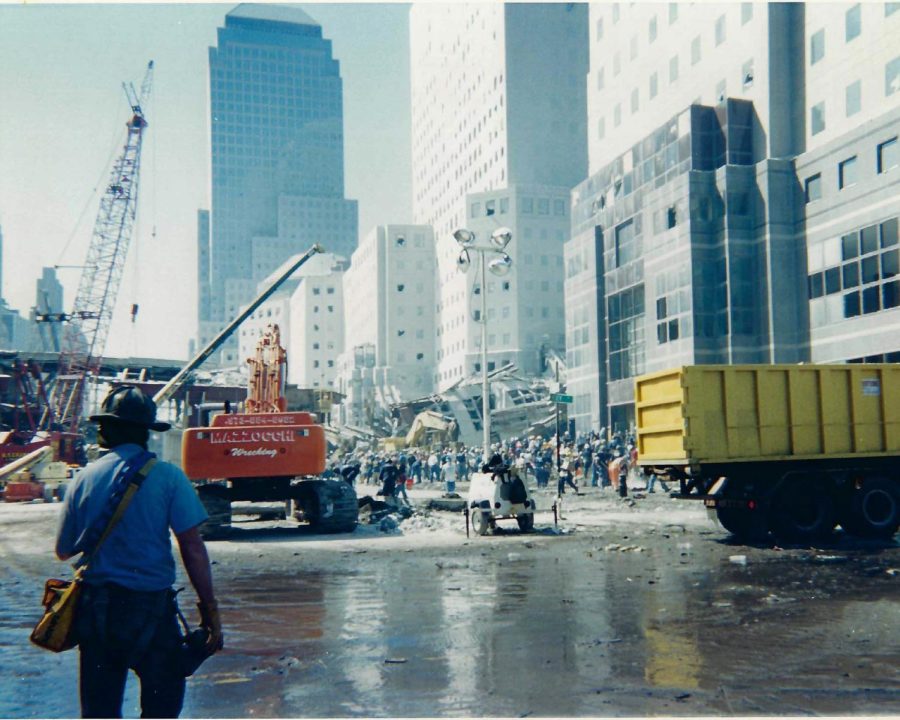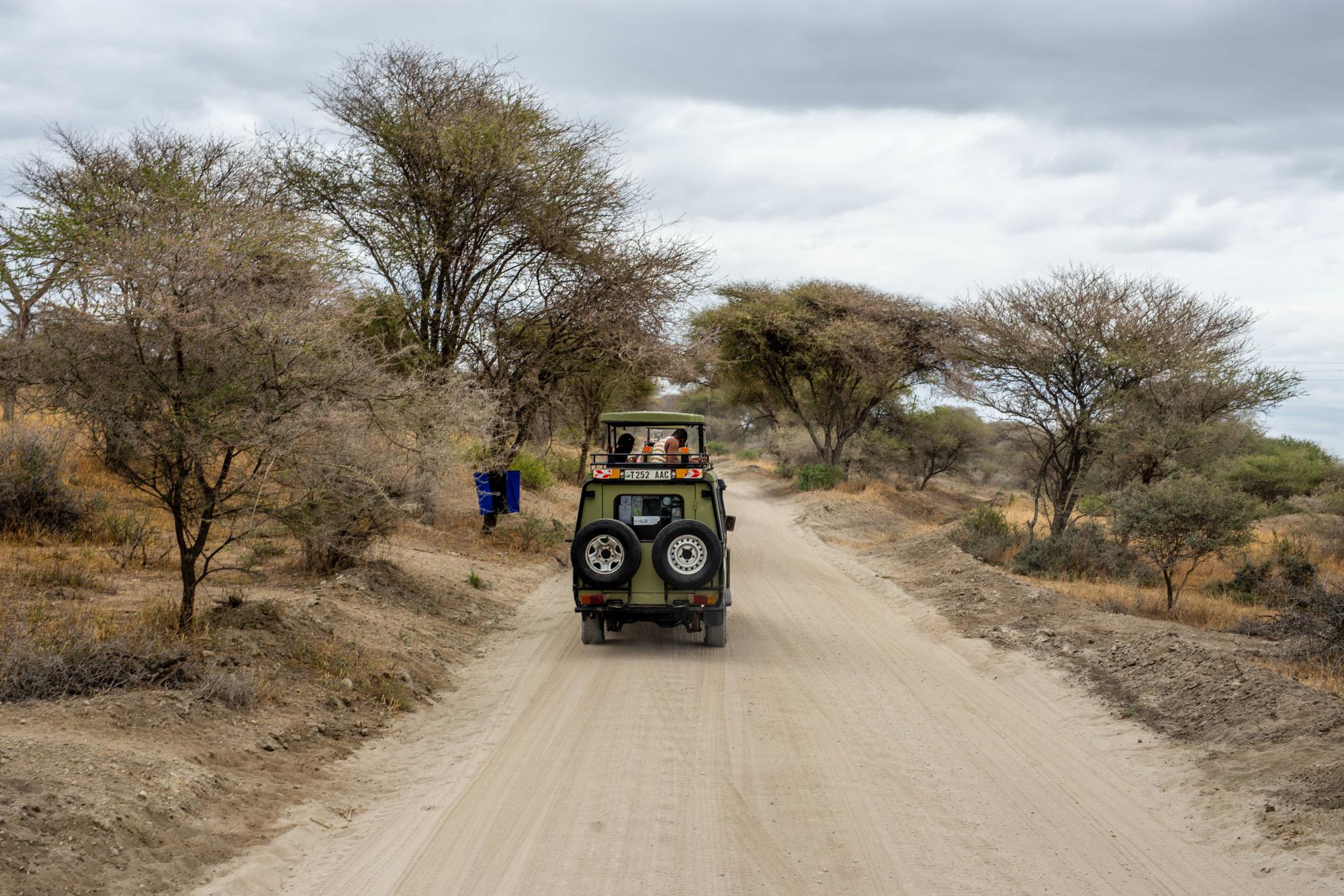
TURKANA, Kenya – The grandniece of archeologist Richard Leakey looked delighted. It had taken 19-year-old Acacia Leakey weeks to go through each complicated-looking inch of the experimental gasifier at the Turkana Basin Institute, but she was now confident that the source of an annoyingly elusive air leak had been mended. And she was ready to see if her handiwork had been successful.
With the press of a large green button, the machine – a jumbled tower, taller than a man, of silver cylinders, black boxes and tubes – hummed to life. Leakey, who was working on the gasifier in her great-uncle’s absence, smiled cautiously as it began the process of turning doum palm nuts, a local food staple, into usable energy.
“This is very exciting!” Leakey said, clapping her hands and giving a little jump.
That satisfaction was short-lived. Minutes later, when Leakey turned the key that powered a car engine built into the gasifier, things started to go wrong.
“It’s quite a particular machine,” she said, sighing. “It’s a prototype, really.”
The gasifier is one of three alternative-energy projects currently in development at the Turkana Basin Institute, an international research facility affiliated with Stony Brook University where scientists study early human evolution. The other two energy projects comprise a biogas plant, which turns goat dung into fuel, and solar panels.
The gasifier is the most complicated of the three. Leakey said she was shocked when the engineer who installed the machine had to refer to a manual. If anything malfunctions or breaks in the dusty desert heat, replacements would come from the manufacturer in California, All Power Labs, at considerable expense and delay.
Another challenge is making alterations to accommodate the organic matter the gasifier burns, said Dr. Devinder Mahajan, an expert in alternative energy at Stony Brook University and Brookhaven National Laboratory, and a big supporter of gasifier technology. TBI brought Mahajan to Turkana to advise them on their energy projects. “We are trying to utilize all the waste materials from the region,” he said.
At TBI the organic matter, or feedstock, used in the gasifier is the pit of a doum palm nut. The nut grows on a doum palm as a coconut does on a coconut palm. The Turkana people eat the fibrous, gingerbread-flavored red-orange flesh or use it to make sweet flour. The inner pit is typically considered waste, but that is exactly the part of the nut the institute uses as gasifier fuel.
But obtaining the doum palm pits for the machine became a daily drama for Acacia Leakey. The institute pays the Turkana five shillings, or six cents, per kilo of pits – a price the locals insist is too low. In the mornings, Leakey said, Turkana women would come to TBI with old fry-oil containers full of pits, each complaining of the hot weather, the long walk and the weight of all the pits they brought to sell. Then the bargaining ensued. If Leakey stood fast on her price, by day’s end she would typically have purchased about one and a half tons of pits for a whopping 6,803.90 shillings (about $78).
At the nearby village of Loreng’elup, the institute is experimenting with another alternative fuel method: a biogas plant. Much simpler and requiring far less maintenance than the gasifier, it powers the lights and a stovetop at a maternity clinic that TBI built.
For its feedstock, the plant uses goat dung, which is plentiful in Turkana. A clinic worker soaks the dung in water overnight in two halves of a blue plastic drum. The next day, he slides the wet pellets into a pipe that connects to a flexible bag about six yards long. Over several days, the plant silently produces methane gas that powers a small generator. Amazingly, the goat dung processor has no odor.
The remaining solids make for good fertilizer, but gardening is an unfamiliar activity in this part of the Turkana region. In fact, the institute’s staff had intended to use the fertilizer in an experimental vegetable garden near the clinic. Acacia Leakey said the garden failed because no one tended it.
On Leakey’s first visit to the biogas plant in several weeks, she was shocked by its condition. Dirty condoms and medical syringes lay scattered on the sandy ground around the plant. A $300 tarp that protected the plastic bladder from direct sun hung haphazardly, leaving one end flapping in the breeze.
Hannes Muntingh, a Nairobi-based energy consultant whose company, Biogas Energy Solutions, installs biogas plants throughout Kenya, saidhe has reservations with biogas plants like the one at the maternity clinic. “They do not tend to last that long though they are more portable and less expensive,” he said, comparing the plant at the maternity clinic to the stone biogas plants his company prefers to install.
TBI’s two projects are both still experimental. If they prove successful, a bigger question remains: Can modern sources of renewable energy have broader application for the Turkana people? “Energy will liberate the poor,” Richard Leakey said in an interview. “But you can’t do that if energy is expensive.”
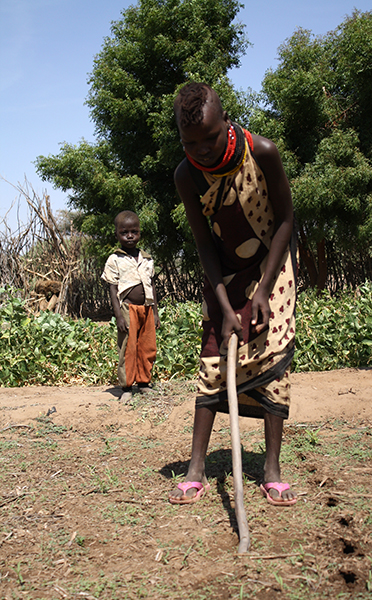
TURKANA, KENYA – Rose, the pre-teen wife of a Turkana man from the village of Vangagetei, lifted a wooden hoe and drove its edge into the earth, turning up dark, rich soil. It was exhausting work even in the relative cool of the morning, but she stopped only intermittently to wipe the sweat from her dusty brow.
On the northern bank of the Turkwel River, the garden where Rose worked stood out as an oasis in a vast, semi-arid expanse of thorny acacias and beige sand. Onions, peanuts, peas, peppers, spinach and even watermelon grew in 28-square-foot rectangular patches within a fence of sticks nearly 7 feet tall. The fences, painstakingly erected by the gardeners, protected the precious yield from the competing mouths of the goats, camels and monkeys that roam the area freely. Tended mostly by women dressed in colorful, traditional clothes and wielding tools made from sticks, the garden looked ancient.
In fact, it has been growing for less than a decade. “We agreed to start these gardens in 2006 because we were hungry,” said an elderly woman who worked near Rose in one of three nearly identical gardens, each the property of a different Turkana village.
Traditionally, the Turkana people have been nomadic pastoralists. Rather than settling in one spot, a necessity for growing crops, they remained mobile, herding the goats and camels whose milk and blood were their primary sustenance toward water and green pasture. But in recent years, a growing reliance on food aid has led many Turkana in an area south of the Turkwel to stop their nomadic search for greener pastures. “Aid leads to dependency – that’s been documented,” said Andrew Nelson, a Program Economist with USAID. “It happens all over the place, and it’s happening even now.”
At the suggestion of French and British missionaries, villagers in places like Vangagetei took up the hoe to supplement their meager diet, which consists largely of goat and camel milk, occasional meat, and supplemental grains distributed by aid organizations. But the difficult work of sustaining a garden in this frail, desiccated land has discouraged others from trying.
“The biggest challenge is lack of water,” said Paul Leslie, a professor and chair at the University of North Carolina Department of Anthropology who has studied Kenya’s nomadic people. “Rainfall is too sparse and unpredictable to be relied on. Irrigation is possible along the major rivers, but even those flow during only part of the year.”
Like other neighboring villages, Vangagetei has tried to improve the odds of bringing in a successful harvest by employing new irrigation technologies. Solar panels, donated by missionaries who promote supplementary agriculture, were installed to pump water from the river and through rubber piping to the plots.
But Peter, the villager in charge of the garden, said that even when the river flows the water might not reach the farthest plots because of a shortage of rubber piping. Rubber pipes remain a specialty item in a place as remote as Turkana. The easiest way to get one’s hands on the material, Peter said, is to wait until the missionaries return to check on the gardens, though their visits are often months, even years, apart.
In spite of the difficulties, such gardens have paid off for their caretakers. Most gardeners reserve a few rows of crops for their own consumption, and some go one step further to sell the majority of their yield to neighbors, trade their crops to other villagers for favors and goods, or sell them to people in larger towns. The influx of extra food and income often means that those who farm can afford to send their children to school, and most do.
“We do not always sell our crops because the town is very far and we do not have a vehicle,” Peter said. “But when something, like school fares, needs to be paid, we can rent a vehicle and driver to bring our wares to Lodwar.” Lodwar, the nearest town, is about 15 miles away.
For Rose, the garden meant a shift in her traditional lifestyle. Instead of cooking and cleaning in her homestead, she now makes the long, lonely trek over a mile of dirt road and game trails, with the task of turning the garden’s solar panel towards the sun. “I must teach someone else to turn the panel,” said Rose, “so that if I am ever sick and cannot come to the garden, people working here will still have water.”
She may have trouble finding a replacement. While gardening heralds a chance at sustainability for this nomadic tribe, the age-old tradition of herding livestock in Turkana is unlikely to fade any time soon. To many Turkana, goat herding still defines who they are.
TURKANA, Kenya — Ana Mana, a lame widow, was frail, bone-thin and wrapped in a deep-blue, loose-fitting garment – but her eyes hinted at unwavering inner strength. She held her head high as she sat in the shade of an acacia tree where the sand was coarse and mixed with pellets of goat dung.
“I’m sick and I’m hungry,” Mana said. “If I take off this cloth, you will see.”
For the most vulnerable, like Mana, the absence of rainfall means the constant threat of hunger. Scientists attribute these more intense droughts to climate change. But in place of scientific understanding, the pastoral tribesmen tell legends about the droughts, or “akumuw” – stories that, with the years, have grown to biblical proportions. The people name the droughts much the way Americans name hurricanes, but in Turkana, the name relates the devastation each drought brings to the land.
When more than 50 years ago a drought scattered goat and camel skeletons across the region, the Turkana called it Namotor, or “bones exposed.” In 1970 came Kimududu, or “the plague that killed humans and livestock.” In 1980, Lopiar was the drought that “swept everything away.”
“Lopiar was a disease,” Mana said, recalling the deaths of goats, other livestock and people.
The Turkana call the current drought Atiaktiak ng-awiyei – “the one that divided homes.” It has displaced whole families, forcing them to move to other villages in search of aid or employment, or to take up residence in a refugee camp.
“In 2010 and 2009, they faced a serious drought,” said Bernard Chamoux, senior operations manager for United Nations High Commissioner for Refugees in Kakuma, Kenya, the site of a large refugee camp. “[It] forced the government and humanitarian agencies to assist the people because their livestock was declining, dying, and [they] themselves had no water.”
Some villagers have attempted to survive by harvesting acacia trees to make charcoal or firewood for sale, but that has reduced the vegetation their livestock eat, said Serigne Kandji, an agro-ecologist for the World Agroforestry Centre.
“The Turkana people have a system to pull in resources to try to survive together during droughts,” Kandji said. “But that can only happen when drought is less intense. Now it’s becoming too hard.”
To curtail the rapid dwindling of resources, Kenya’s Ministry of Water and Irrigation began a farming education project in 2008 called the Millennium Development Goals, which aided participating villages and trained villagers to maintain and harvest crops.
But for these long-term investments to succeed, Kandji said, the government needs to invest in a viable irrigation system that could collect and store rainwater to sustain villages through times of drought and give farming a chance.
“Investment in water is needed,” Kandji said.
The few regions where irrigation systems have been built have already shown a high yield in vegetation, according to a 2008 water ministry report on rain harvesting in Turkana. The study concluded that the people in those communities now look less to the skies and more to the ground, by caring for their fields and gardens.
But in the lands where there are no plowed fields or water storage systems, villagers still wait for rain. And while they wait, members of Mana’s extended family share with her the little food they have.
“If the rain stops, and the government does not intervene,” Mana said, “we will die. It will just be up to the gods.”

